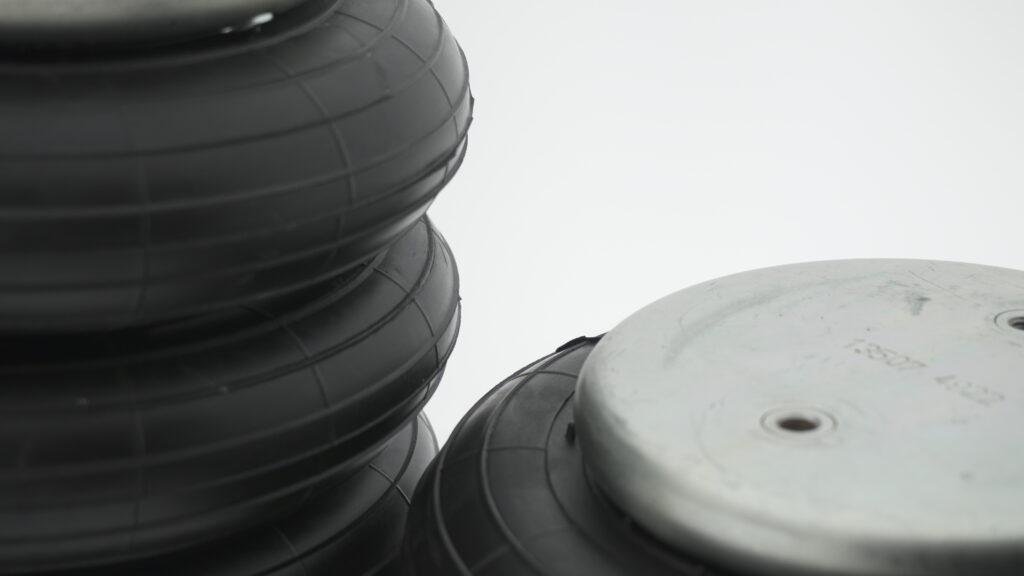
Reducing carbon emissions with air bellows in transport systems is a critical advancement for sustainable industrial logistics. Reducing carbon emissions with air bellows enables facilities to achieve lighter, more energy-efficient transport platforms. Consequently, air bellows allow equipment to operate with less power while maintaining load stability and vibration isolation. Moreover, they help systems absorb shocks and misalignments without additional mechanical components, minimizing weight and material use. As a result, industries employing air bellows in transport lines and lifting platforms drastically lower their energy consumption. Equally important, lower energy demand leads directly to reduced greenhouse gas emissions. Furthermore, air bellows facilitate precise load handling, which optimizes motor and conveyor performance. Along with operational benefits, their long life cycle cuts the emissions associated with frequent replacements. Therefore, implementing air bellows in transport-related operations becomes a highly effective carbon-reduction strategy. For instance, factories using air bellows report substantial emissions savings over time.
Lightweight construction reduces carbon footprint
One major factor in reducing carbon emissions with air bellows in transport systems is the advantage of lightweight construction. Air bellows weigh significantly less than rigid mechanical supports or actuators, meaning less energy is required to move systems. In turn, this reduction in moving mass leads to smaller motor sizes and lower fuel or electricity consumption. Moreover, lighter systems accelerate and decelerate more efficiently, leading to further operational energy savings. Consequently, transport equipment integrating air bellows produces fewer carbon emissions per operational cycle. Not only does this enhance environmental sustainability, but it also contributes to reduced operating costs. Additionally, by optimizing weight distribution, air bellows increase the durability of transport components. Furthermore, lightweight structures are easier to install and maintain, requiring less machinery and energy during installation. Thus, lightweight air bellows constructions become essential allies in the mission to decarbonize industrial transport activities sustainably and effectively.
Enhanced energy efficiency through vibration isolation
Enhanced energy efficiency is another important pathway for reducing carbon emissions with air bellows in transport systems. Air bellows provide superior vibration isolation, preventing energy loss through structural resonance. Additionally, minimizing vibrations protects motors, conveyors, and frame structures, improving overall energy efficiency. Consequently, less corrective energy is needed to maintain transport system integrity and performance. Moreover, isolated systems experience fewer mechanical failures, decreasing the need for replacements and the carbon footprint of manufacturing spare parts. Besides, smoother operations reduce friction losses, ensuring optimal energy transfer during material handling. In particular, air bellows stabilize loads during movement, meaning drive systems do not have to overcompensate for imbalance. Therefore, facilities installing air bellows benefit from lower daily energy use and contribute less to global carbon emissions. By extension, the adoption of air bellows supports corporate environmental responsibility policies and compliance with stricter emissions standards globally.
Low-maintenance systems minimize indirect emissions
Low maintenance requirements are a further reason for reducing carbon emissions with air bellows in transport systems. Because air bellows have no sliding seals or lubrication needs, they significantly lower the emissions associated with maintenance activities. Additionally, less frequent servicing means fewer trips for maintenance crews and reduced use of service vehicles, minimizing indirect emissions. Not only does this improve operational uptime, but it also lessens the need for parts shipments and waste disposal. Furthermore, air bellows constructed from reinforced rubber and fabric offer outstanding resistance to environmental degradation. As a result, the overall life expectancy of systems increases, contributing to a substantial reduction in lifecycle emissions. Also, facilities adopting air bellows notice that the risk of oil spills and chemical leakage is virtually eliminated. Therefore, low-maintenance, high-durability air bellows represent a simple yet powerful method to drive emissions reductions across industrial transport infrastructures.
